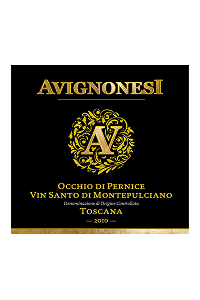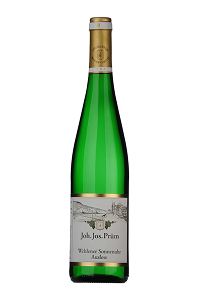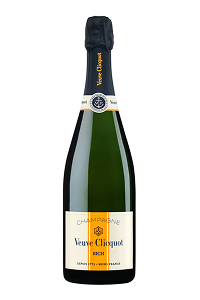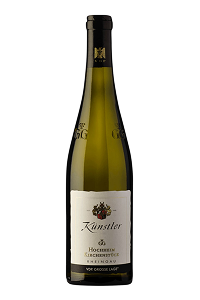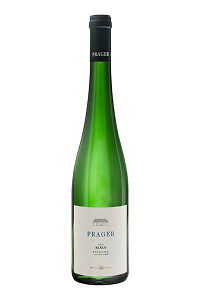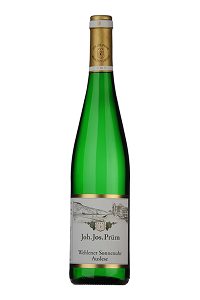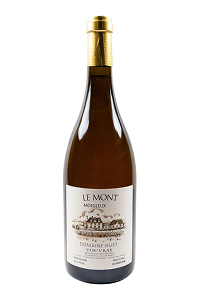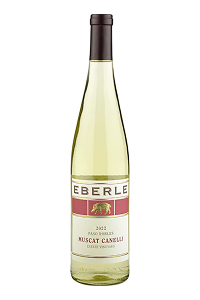Best sweet wine: top brands worldwide in 2025
Sweet wine was once just for dessert, but not anymore! These rich, expressive wines have evolved into favorites for even the most sophisticated palates. In our guide to the best sweet wines of 2025, you will discover surprising insights, essential characteristics, and expert advice on how to enjoy them, whether paired with food or savored on their own.

By
Last updated:
Table of Contents
Top 10 recommended sweet wines by experts
Occhio di Pernice Vin Santo di Montepulciano (375ML half-bottle) 2010
Italy
Wehlener Sonnenuhr Gold Capsule Riesling Auslese – J.J. Prüm 2023
Germany
Vintage Port – Ferreira 2007
Portugal
Veuve Clicquot Rich (NV)
France
Kunstler Hochheim Kirchenstuck Riesling Grosses Gewachs 2020
Germany
Smaragd Klaus Riesling – Prager 2022
Austria
Maximin Grünhau Herrenberg Riesling Kabinett 2020
Germany
Mission Angelica (500 ML) – Glunz Family Winery & Cellars
California
We’ve curated a collection of recommended sweet wine that truly stands out, highlighting both iconic labels and emerging stars in the world of dessert and sweet wines. These selections aren’t just well loved, they represent the best rated sweet wines in 2025.
What is a sweet wine and how is it made?
Sweet wine comes in a wide range of styles, crafted through unique production techniques that set them apart from traditional dry wines.
How exactly is sweet wine made? It starts with selecting high-sugar grapes, white or red, followed by the usual steps:
- Harvesting: grapes are picked—often later than for dry wines—to ensure higher sugar content, which is essential for sweetness.
- Crushing: the grapes are gently crushed to break the skins and release juice, starting the process of extracting color and flavor.
- Pressing: juice is separated from the skins and seeds. For sweet reds, some skin contact is retained to develop color and richness
Sweetness comes then from stopping or altering fermentation to preserve natural sugars. Some of the most common sweet wine grapes include:
- Moscato: known for its light body, fruity and floral aroma, is often used in gently sweet sparkling wines, but there are also dry variations.
- Riesling: versatile and aromatic, Riesling can range from dry to lusciously sweet, combining flavors of apricot, honey, acacia and citrus fruits.
- Gewürztraminer: boldly aromatic with notes of lychee, rose and spice, is often presented in off-dry to sweet style.
- Zibibbo: a variety native to Sicily, produces highly aromatic and intensely perfumed wines. Commonly used for sweet wines, there are delicious variations of dry Zibibbo wines.
- Malvasia: largely available across the sundrenched lands of the Mediterranean, this grape is used in sweet wines, with floral and tropical aromas.
- Chenin Blanc: especially cultivated in the Loire Valley (France), it makes beautifully balanced sweet wines with fresh acidity and notes of quince, apple and honey.
- Lambrusco: a very versatile grape that can be found in both dry and sweet slightly sparkling wines, with vibrant young red fruit flavors.
- Grenache: used in fortified wines, Grenache brings warmth, red berry richness and spice.
- Semillon: a key grape in renowned sweet wines like Sauternes and Barsac, Semillon is especially precious when affected by its noble rot Botrytus cinerea, which brings out notes of dried apricot, marmalade and toasted nuts.
These grapes give life to different styles of sweet wine. It all comes down to carefully managing the fermentation process!
Sweet wine types: production method
As the name suggests, sweet wines are defined by their sugar content, but choosing the right sweet wine types involves more than just sweetness level alone. To make the right choice, it’s also important to consider the production method.
Here are the main production methods:
- Natural sweet wines: fermentation stops early, usually by cooling or adding sulfur dioxide, leaving sugar in the wine.
- Fortified sweet wines: alcohol is added during fermentation to stop yeast, making sweet, strong wines like Porto and Sherry.
- Passito and late harvest wines: grapes dry on the vine or after picking, concentrating sugar and flavors as water evaporates.
- Noble rot wines: a special mold called “noble rot” makes grapes sweeter and adds rich flavors like honey and spices.
- Ice wines: grapes are picked frozen, which concentrates sugar and acidity for a sweet but fresh taste.
Don’t guess—choose your sweet wine with confidence! These insights make it easier to explore the different types of sweet wines and pick the right one for any moment.
Sweet wine by sweetness: understanding the wine sweetness scale
Most wines fall into three sweetness categories on the well-established wine sweetness scale: dry, semi-sweet, and sweet. Since dry wines contain little to no sugar, we’ll focus here on the sweeter styles.
Here’s a quick guide to understanding sweet wines by sweetness:
- Sweet wine: offers a gentle sweetness, perfect for those wanting just a hint.
- Medium sweet wine: is richer with smooth fruit flavors.
- Very sweet wine: is intense and syrupy, ideal with desserts.
Check out our list of wines by sweetness below to find your perfect match!
| Sweetness | Top Picks | Common Varietals | Residual Sugar |
|---|---|---|---|
| Sweet | Nivole Moscato d’Asti by Michele Chiarlo | Riesling, Muscat, Chenin Blanc | 4–16 g/L |
| Medium Sweet | Late Harvest Zinfandel by Dashe Cellars | Gewürztraminer, Zinfandel | 45–100 g/L |
| Very Sweet | Pedro Ximenez Solera 1927 by Alvear | Muscat, Lairén, other blends | 100+ g/L |
Sweet bubbly wine: the perfect balance of sugar and sparkle
Sweet bubbly wine is a fun and tasty way to enjoy sparkling wine with a touch of sweetness. Made by stopping fermentation early or adding carbon dioxide, sweet sparkling wine keeps both sugar and fizz alive.
Here are some delicious picks:
- Bricco Quaglia Moscato d’Asti – La Spinetta (Italy)
- Sweet Rosé – Korbel (California)
- Reggiano Lambrusco Rosso Secco C’era Una Volta – Lombardini (Italy)
Perfect for celebrations or dessert, sweet bubbly wines come in white, red, and rosé styles.
Non alcoholic sweet wine
Love a good sweet wine but want to skip the alcohol? Good news, you don’t have to miss out entirely! Finding the truly perfect non alcoholic sweet wine can be a bit of a treasure hunt. In fact, it’s tricky for producers to get that rich body without the alcohol. However, delicious alcohol free sweet wine is definitely growing in popularity.
Here are some great options to kick off your search:
- 0.0 Alcohol Free by Serena 1881 (Italy)
Food pairing suggestions: light pasta dishes or soft cheeses. - 0,0% Alcohol Free Rosé by Freixenet (Spain)
Food pairing suggestions: tapas, grilled vegetables, or fruit salads. - Perle Rosé Sans Alcool by Domaine Pierre Chavin (France)
Food pairing suggestions: charcuterie, quiche, or berry-based desserts.
Whether you’re after a classic profile or something on the sweeter side, be sure to check the label to confirm it’s truly alcohol-free!
Sweet wine food pairing: the challenge is real
Traditionally, sweet wines are often for desserts, but their pairing potential is vast! While finding the best food to pair with sweet wine can be a challenge, their diverse range of sweetness, acidity, and body offers surprising matches for savory dishes too.
The table below navigates some recommended sweet wine food pairings, revealing delicious combinations for any course.
| Food | Sweet Wine | Grape Variety | Type & Structure |
|---|---|---|---|
| Dry Pastries, Fruit Tarts, Peach Cake | Moscato d’Asti – Ceretto Santo Stefano | Muscat | Sweet, sparkling, aromatic, light body |
| Rich Cured Meats, Mortadella, Lasagna | Lambrusco Grasparossa di Castelvetro Amabile – Donelli | Lambrusco Grasparossa | Semi sweet, sparkling, fruity, medium body |
| Blue Cheese, Dark Chocolate Cake | Casal dei Ronchi Recioto della Valpolicella Classico – Serego Alighieri | Corvina, Rondinella, Molinara | Sweet, rich, full body, velvety |
| Fresh Strawberries, Milk Chocolate Desserts, Light Sacher Torte | Brachetto d’Acqui – Braida | Bracchetto | Sweet, sparkling, aromatic, light body |
| Aged and Spicy Cheese, Foie Gras, Desserts with Dried Fruit | Hengst Gewurztraminer 2022 | Gewurztraminer | Sweet but with a dry finish, presents aromas of ripe fruits and Christmas spices |
| Berry Cheesecake, Vanilla Cupcakes, Strawberry Mousse | Passito di Pantelleria – Cantine Rallo | Zibibbo | Sweet, intense, aromatic, full body |
| Cotechino with Lentils, Savory Pies, Autumn Vegetables, Risotto | RossoViola Lambrusco 2023 – Azienda Agricola Luciano Saetti | Lambrusco | Semi sweet, sparkling, fruity, medium body |
| Foie Gras, Tarte Tatin, Blue Cheese like Bleu d’Auvergne | Steingrubler Gewurztraminer Grand Cru 2021 – Domaine Barmes-Buecher | Gewurztraminer | Sweet, rich, complex, balanced acidity, full body |
Sweet wine grape variety: origins and different uses
The incredible sweet wine grape variety comes from distinct regions and clever winemaking. These special grapes bring intense aromas, natural sweetness, or even “noble rot” to the bottle.
Some of the most popular sweet grape wines include:
- Muscat: one of the oldest grape varieties, known for its intensely aromatic, floral, and grapey character.
- Brachetto: a red Italian grape producing light, sweet, slightly sparkling wines with flavors of rose, strawberry, and red berries.
- Riesling : late harvest Riesling creates beautifully sweet wines with vibrant acidity and notes of apricot, citrus, and honey.
- Sémillon: key grape in Sauternes, producing rich, luscious dessert wines with flavors of honey, dried fruit, and marmalade.
- Gewürztraminer: intensely aromatic, offering exotic spice, lychee, rose petal, and tropical fruit—often made in off-dry or sweet styles.
- Zibibbo: a Muscat variety mainly grown in Sicily, producing sweet, floral wines often made from sun-dried grapes (passito style).
- Chenin Blanc: known for its high acidity and versatility, sweet Chenin Blanc wines showcase flavors of honey, pear, and quince.
- Malvasia: an ancient aromatic grape used for sweet wines with apricot, peach, and orange blossom notes, often in passito or fortified styles.
Ready to dive in? Let’s explore some of the most popular names of sweet wines and their amazing grapes.
Top sweet wine brands: how to build your collection
Thinking about building your own wine collection? Then you definitely need at least one bottle of sweet wine! These wines carry centuries-old traditions and are prized for their exceptional aging potential.
Among the top sweet wine brands, collectors highly value the famous Château d’Yquem (Sauternes), Vin Santo, and the elegant, rare Port.
Here’s why sweet wines are so sought after:
- Produced using unique winemaking methods, such as drying grapes or partial fermentations.
- Harvested from historic vineyards known for their exceptional terroirs.
- Distributed in limited releases, commonly through waitlists or exclusive auctions.
- Known for their ability to mature gracefully and develop distinctive complexity over time.
A tip from our team: don’t miss the Vista Alegre Single Harvest 1940, one of the rarest and finest Ports!
Sweet wine serving temperature and other key wine components
Sweet wine serving temperature is critical to preserving the balance between residual sugar and acidity. Generally, chilling sweet wines to lower temperatures enhances perceived acidity, which prevents the wine from tasting overly sweet. Proper temperature control also helps to reveal the intricate layers of fruit, floral, and spice notes characteristic of quality sweet wines.
That being said, other factors must also be considered. Key components like sweet wine alcohol content (ABV), tannin and acidity levels, and aging potential greatly influence a wine’s structure and overall experience.
The following table provides a comprehensive overview of these elements, along with optimal serving temperatures across various sweet wines.
| Sweet Wine Name | ABV | Tannin / Acidity | Aging Potential | Serving Temp |
|---|---|---|---|---|
| Moscato d’Asti 2024 – La Morandina | 5,5% | Low tannin, high acidity | 1–3 years | 43-46° F |
| Batch 88 Starboard – Quady Winery | 20% | Medium tannin, medium acidity | 5–15 years | 61-64° F |
| Mosel Slate Riesling Spatlese – Monchhof | 8,5% | Low tannin, high acidity | 10+ years | 46-50° F |
| Dolce Fiore Lambrusco – Alfredo Bertolani | 7% | Low tannin, medium acidity | 1–3 years | 43-46° F |
| Brachetto 2022 – Bartenura | 6% | Low tannin, medium acidity | 1–3 years | 43-46° F |
How to store sweet wine
Want to keep your sweet wine fresh and full of flavor? Proper storage makes all the difference! Whether you’re saving a bottle for a special occasion or aging a prized vintage, these simple steps will help preserve its delicious aromas and rich taste:
- Store bottles horizontally in a cool, stable place between 55–65°F (12–18°C).
- Keep the wine in the dark, away from sunlight and UV rays.
- Maintain moderate humidity (around 60–70%) to keep corks from drying out.
- Avoid sudden temperature changes, heat, and vibrations that can harm the wine.
- After opening, seal the bottle tightly and store it in the fridge, preferably in the least cold section.
In any case, aim to finish opened bottles within a few days for the best experience. If your sweet wine starts smelling sour or off, it’s a sure sign it’s time to open a fresh bottle!
How to choose the right sweet wines for beginners
Thinking about gifting a sweet wine or pairing one with dessert but don’t know where to start? Don’t worry! Even if you’re new to the world of wine, these tips will help you choose the perfect sweet wines for beginners.
To start, here are some beginner-friendly sweet wines to try:
- Moscato d’Asti (Italy)
Body: light bodied, fruity, slightly sparkling
Best for: perfect with fresh fruit or light desserts - Port (Portugal)
Body: full bodied and fortified
Best for: ideal with chocolate or strong cheeses - Late Harvest Riesling (USA)
Body: crisp, with notes of peach and honey
Best for: perfect with creamy desserts or spicy dishes
What to look for when choosing your sweet wine:
- Sweetness level: check terms like semi sweet, sweet, or late harvest to gauge sweetness
- Dessert pairing: match the wine’s sweetness with your dessert to avoid bitterness
- Alcohol content: 10–12% abv wines are lighter and easier to enjoy
- Regional specialties: explore wines from different regions for authentic flavors
- Wine style: choose sparkling, still, or fortified depending on your occasion.
These easy suggestions make exploring the best sweet wine for beginners feel effortless, helping you find the perfect pour for both your palate and the moment.
Popular red wine varieties: a regional breakdown
The uniqueness of sweet wines makes them some of the most challenging to select—whether for a special gift or to enrich your cellar. That’s why expert opinions really come in handy! Critics don’t just give scores – they paint vivid descriptions that let you almost taste the wine without even popping the cork.
Wines are scored using a 100-point scale, with points awarded based on key qualities, such as:
- Balance between sweetness and acidity: crucial to avoid cloying sweetness and maintain freshness.
- Aroma complexity: the range and intensity of fruit, floral, honey, and spice notes.
- Texture and body: how rich and smooth the wine feels on the palate.
- Terroir and style: how origin and winemaking methods shape the wine.
- Aging potential: the ability to develop complexity over time.
If you’re new to sweet wines, it’s wise to start with the ones that have a high score, just like picking a restaurant based on trusted reviews!
FAQs Best sweet wine sections
What is the best type of sweet wine?
If you’re asking what is the best type of sweet wine, it depends on your taste. Moscato, Riesling, and Gewürztraminer are popular for their fruity sweetness. For reds, Lambrusco and Brachetto stand out. Dessert wines like Ice Wine, Sauternes, and Late Harvest styles offer rich, smooth flavors perfect for those who enjoy sweeter wine options.
What is the best wine to drink that is sweet?
As the best wine to drink that is sweet, many enjoy varieties like Moscato, Riesling, and Muscat. These wines offer vibrant fruit notes and natural sweetness. Dessert wines such as Ice Wine or Late Harvest styles are also favorites, delivering rich, smooth flavors perfect for those who prefer sweet, easy-to-sip, and aromatic wine experiences.
Does organic sweet wine contain sulfites?
Different types of sweet wine include Moscato, Riesling, and Gewürztraminer, known for their fruity and floral notes. Dessert wines like Ice Wine, Sauternes, and Late Harvest styles offer richer sweetness. Sweet red wines, such as Lambrusco and Brachetto, provide fruity, lighter options. Each type delivers unique flavors suited to various sweet wine preferences.
Do organic red wines contain sulfites?
Organic sweet wine can contain sulfites, but usually in lower amounts than conventional wines. Sulfites occur naturally during fermentation, and organic wines may have added sulfites within legal limits to preserve freshness and prevent spoilage. However, some organic wines are labeled sulfite-free, appealing to those sensitive to sulfites or seeking minimal additives.
Does sweet wine have health benefits?
Sweet wine may offer health benefits in moderation, thanks to antioxidants that support heart health and circulation. However, its higher sugar content means it should be consumed responsibly. Overconsumption can cause health issues, so enjoying sweet wine in moderation is essential to balance its potential positive effects with the risks of excess sugar and alcohol intake.
Can sweet wine be aged?
Sweet wine can be aged, but not all types benefit from it. Dessert wines like Sauternes, Tokaji, and certain Rieslings often gain complexity and deeper flavors with age. However, many sweet wines are best enjoyed young to preserve their fresh, fruity qualities. Proper storage is crucial to maintain their taste and quality over time.
How long can sweet wine last once opened?
After opening, sweet wine usually lasts longer than dry wines because sugar acts as a preservative. When sealed tightly and stored in the fridge, it can remain enjoyable for 5 to 7 days. Using a vacuum seal can help prolong freshness, but the wine’s flavor and quality may start to fade after one week.
How many calories are in sweet wine?
Sweet wine usually has more calories than dry wine because of its higher sugar content. A standard 5-ounce glass contains about 120 to 160 calories on average. Calorie levels vary based on sweetness and alcohol percentages, with sweeter wines generally having more calories than dry ones due to their added sugar and alcohol.
What is a good sweet wine?
A good sweet wine varies by preference, with popular options like Moscato, Riesling, and Gewürztraminer known for fruity, aromatic flavors. Richer dessert wines like Ice Wine and Sauternes offer complexity, while sweet reds like Lambrusco provide lighter, fruit-forward choices. The best sweet wine depends on your desired sweetness level and flavor profile.
What type of wine is sweet?
Sweet wines come in many types, including Moscato, Riesling, and Gewürztraminer, which are naturally fruity and sweet. Dessert wines like Sauternes, Ice Wine, and Late Harvest offer rich sweetness, while sweet reds such as Lambrusco and Brachetto provide lighter, fruity flavors. These wines suit various palates and pair well with desserts or can be enjoyed alone.
Which wine is sweeter?
Wines such as Moscato, Riesling, and Gewürztraminer tend to be sweeter because of their natural sugars. Dessert wines like Sauternes, Ice Wine, and Late Harvest are often even sweeter. Sweet red wines, including Lambrusco and Brachetto, offer more sweetness compared to dry reds, appealing to those who enjoy richer, sweeter wine flavors.
Should a sweet wine be stored upright or on its side?
Sweet wine should be stored on its side, especially if it’s sealed with a cork. This keeps the cork from drying and letting in oxygen. Upright storage works short term or for screw caps, but side placement is ideal for aging. It maintains freshness and protects the wine’s quality over time.
